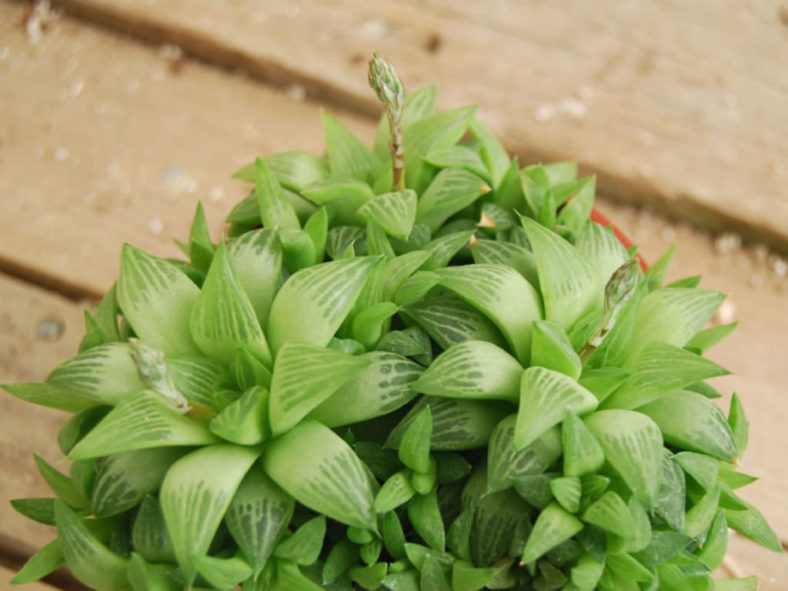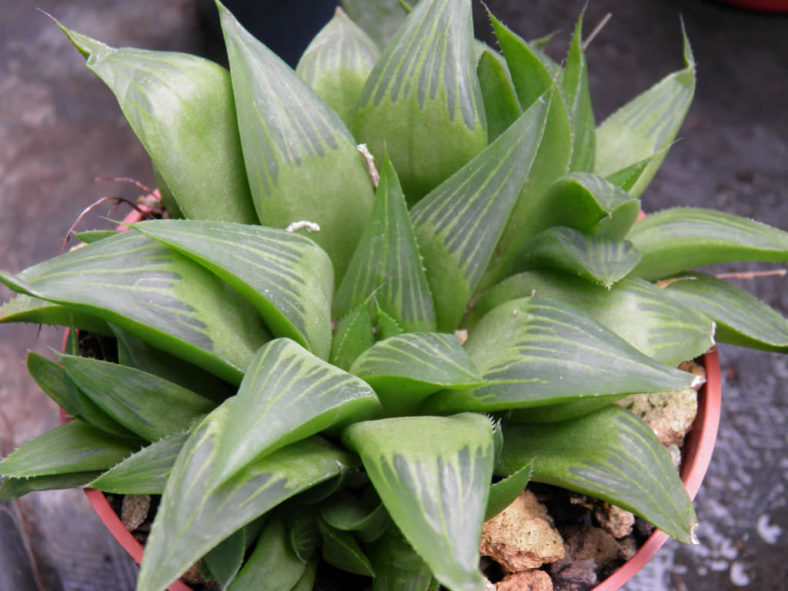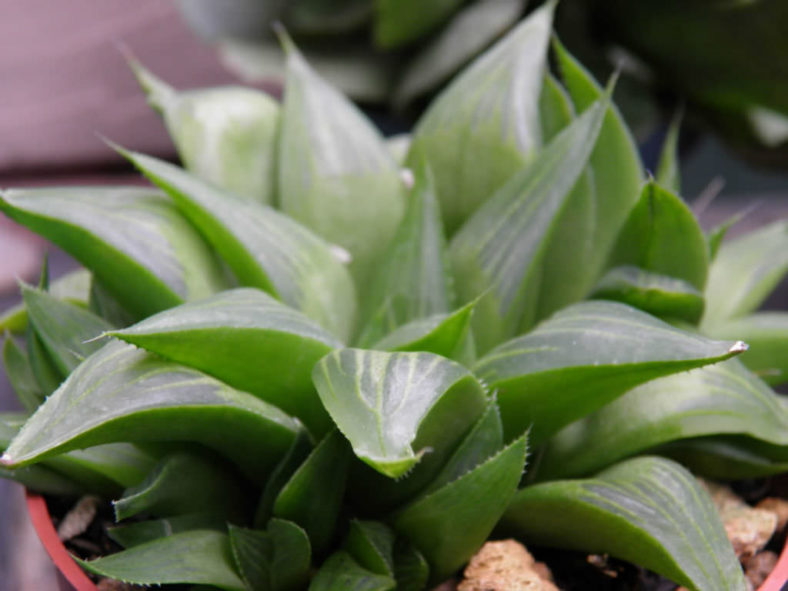Scientific Name
Haworthia turgida Haw.
Synonym(s)
Aloe turgida, Catevala turgida, Haworthia retusa var. turgida
Scientific Classification
Family: Asphodelaceae
Subfamily: Asphodeloideae
Tribe: Aloeae
Genus: Haworthia
Etymology
The specific epithet "turgida" (pronounced "TUR-jih-duh") means "turgid, swollen, inflated, distended" and refers to the swollen leaves of this species.
Origin
Haworthia turgida is native to South Africa. It grows on cliffs along the Langeberg Mountains in the Western Cape province at elevations from 1,640 to 4,920 feet (500 to 1,500 m).
Description
Haworthia turgida is a small succulent that forms rosettes of swollen, light green to yellowish-green leaves with darker translucent lines at the tips. It is a variable species in leaf size, shape, and texture. The rosettes can grow up to 4 inches (10 cm) in diameter, usually about 2 inches (5 cm), and produce offsets freely, forming a clump with age. The leaves are lance-shaped, with the more pointed end at the base and recurved tips, measuring up to 1.6 inches (4 cm) long and 0.5 inches (1.2 cm) wide. They become pinkish or reddish in strong sunlight.
Usually in spring, mature rosettes produce slender, unbranched stalks bearing 10 to 20 small, tubular flowers. The flowers are white with purplish-green mid-stripe.

Varieties of Haworthia turgida
- Haworthia turgida var. longibracteata
- Haworthia turgida var. suberecta
- Haworthia turgida var. turgida
How to Grow and Care for Haworthia turgida
Hardiness: USDA hardiness zones 10a to 11b: from 30°F (-1.1°C) to 50°F (10°C).
These succulents are not considered difficult to grow as houseplants. If you can keep a pot of Aloe alive on a windowsill, chances are you can do the same with a dish of Haworthia. As with all succulents, the most dangerous situation is overwatering. They should never be allowed to sit in water under any circumstances. At the same time, these little decorative plants can be grown in interesting containers such as teacups and even miniature baby shoes. If you're given a Haworthia in such a container, ensure the container has adequate drainage.
Haworthias are small, usually between 3 and 5 inches (7.5 cm and 12.5 cm) in height, and relatively slow-growing. Therefore, they are often grown in small clusters in wide, shallow containers. Over time, clusters will naturally enlarge as the mother plant sends off small plantlets. When the cluster has outgrown its container, repot into a new, wide, shallow dish with fresh potting soil in the spring or early summer. This is also the time to take offsets for propagation.
Learn more at How to Grow and Care for Haworthia.
Links
- Back to genus Haworthia
- Succupedia: Browse succulents by Scientific Name, Common Name, Genus, Family, USDA Hardiness Zone, Origin, or cacti by Genus
Photo Gallery
Click on a photo to see a larger version.

